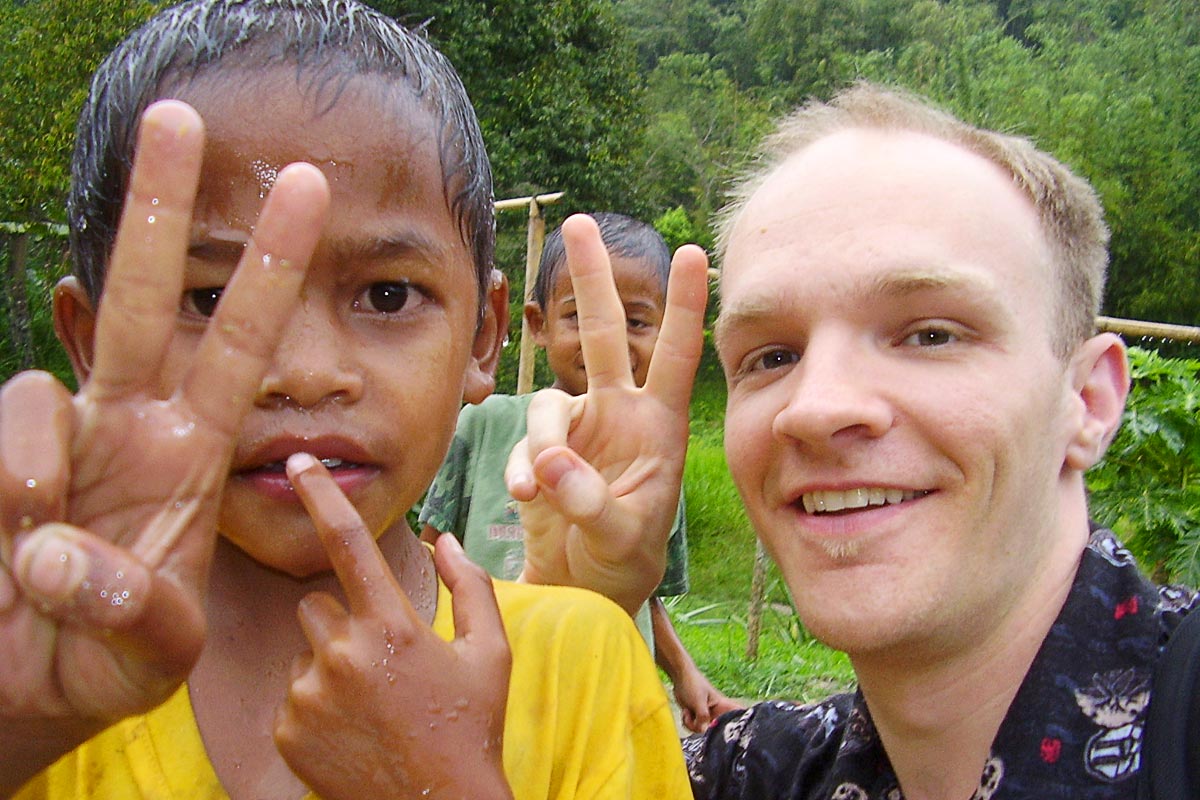
They built up with their bare hands
What we still can't do today
—Neil Young
In central Malaysia you can visit some of the small and traditional villages of the Orang Asli people tucked far away in the tropical jungle.
Although to some of these communities foreign visitors come daily to snap photos, play with the kids, and get a crash course in life there, they still feel very, very far away from everything else.
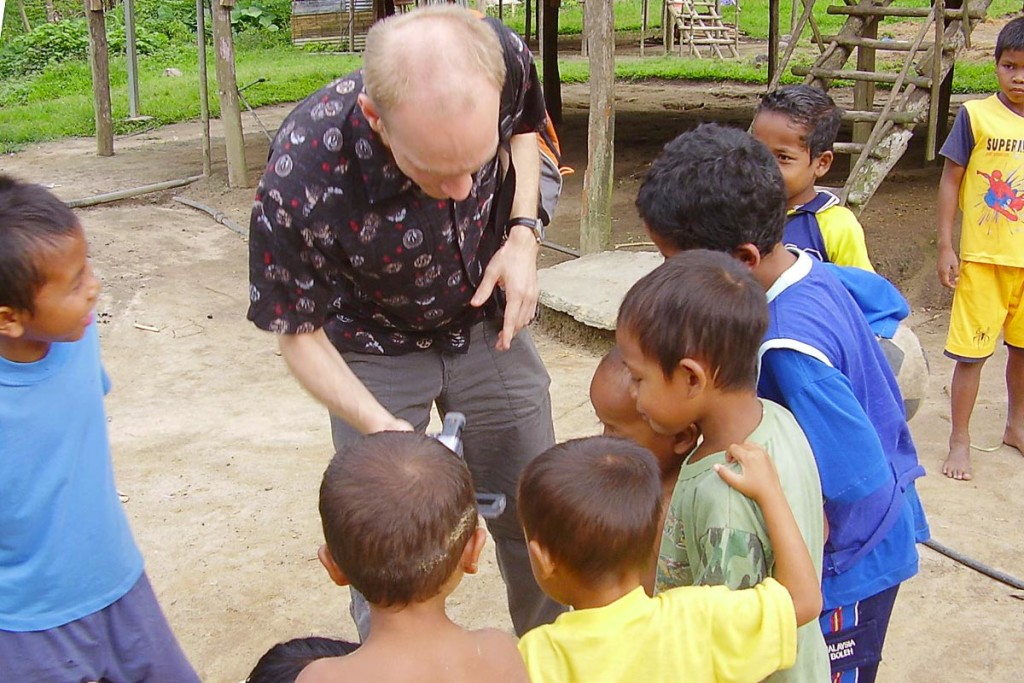
Showing off my video camera to the Orang Asli children.
The central mountains make up an area called Cameron Highlands, and Masayo and I are staying in a town called Tanah Rata at the cozy and cool hilltop Father’s Guest House. The guesthouse offers a range of guided tours.
Usually, guided tours are something we instinctively avoid. The very word “tour” smacks of prepackaged, unfulfilling whisks around to get a glimpse of “sights” and sigh and sweat and buy souvenirs.
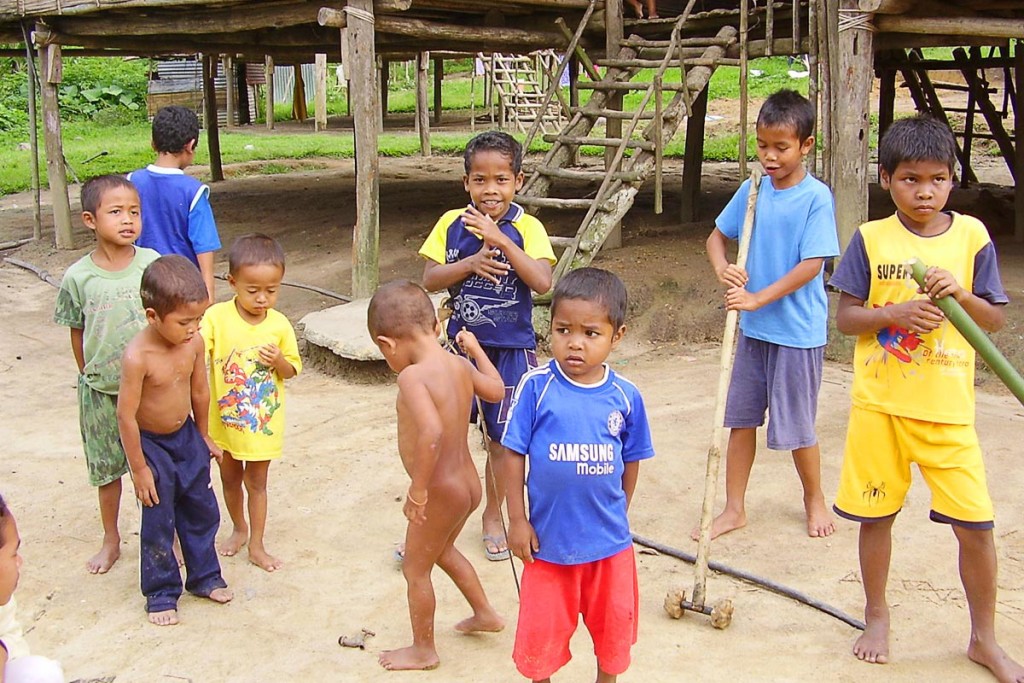
But the Orang Asli village tour looked interesting, and we decided to try it.
“Orang” means “people”, and “asli” means “original”, so basically the 18 traditional tribes of Malaysia are collectively called “original people”. They were brutalized and slaughtered in times past, but now there is a movement to respect and preserve their communities.
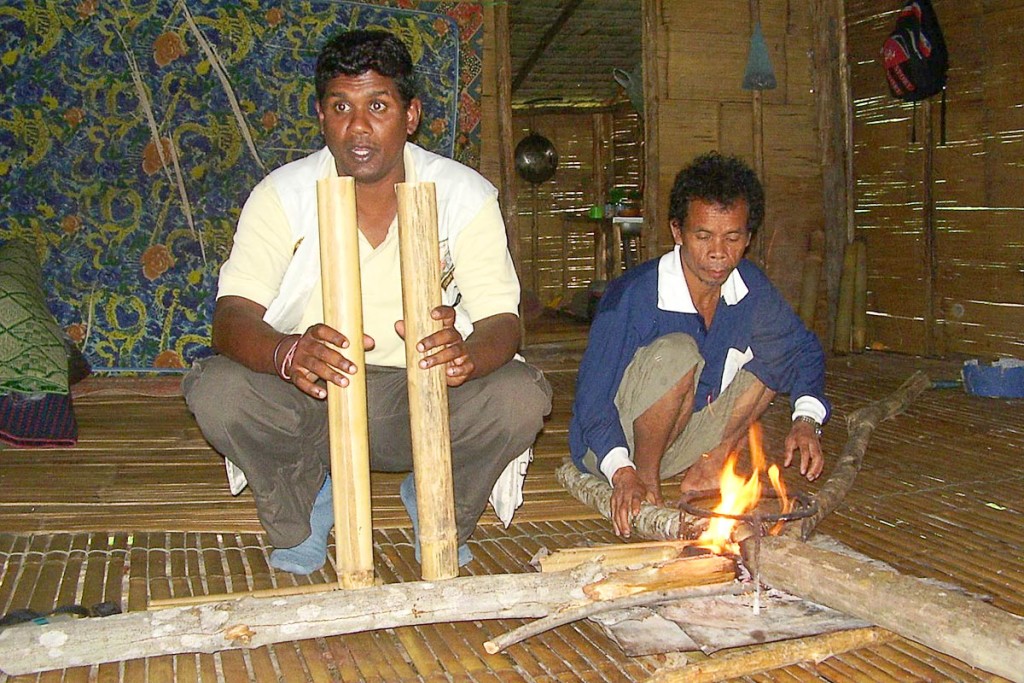
Kumar and a village elder give us a fire demonstration – inside the wooden hut.
The tour turned out to be great, led by the effusive and irrepressible Kumar who wore a light-colored safari jacket and drove us with a German couple, Nicholas and Nathalie, two hours into the thick jungle along slippery dirt roads.
Diabetes report – Diabetes in the primeval jungle
I took my insulin and test strips and low blood sugar snacks with me to the Orang Asli village in a small day pack, of course. But the tour only lasted between lunch and dinner, and I didn’t need to eat food or use any of my diabetes gear. The highlands are high and cool enough that I wasn’t concerned about my insulin being too warm. When it seemed that our car might get stuck I began to wonder what we would eat if we were trapped in the jungle overnight (see below), and how exactly I would handle diabetes in that situation.
But I had all I’d need, so I wasn’t too worried by the prospect. Being prepared as a diabetic traveler leads to a much less stressful experience.
At one point we stopped on the side of the road, and Kumar led us to some plants. After peering at them himself, he suddenly seemed satisfied, and instructed us to look hard and find the insect. We squinted and searched, but none of us saw it. Finally he pointed to it: a stick insect, merging perfectly with the branch it was on.
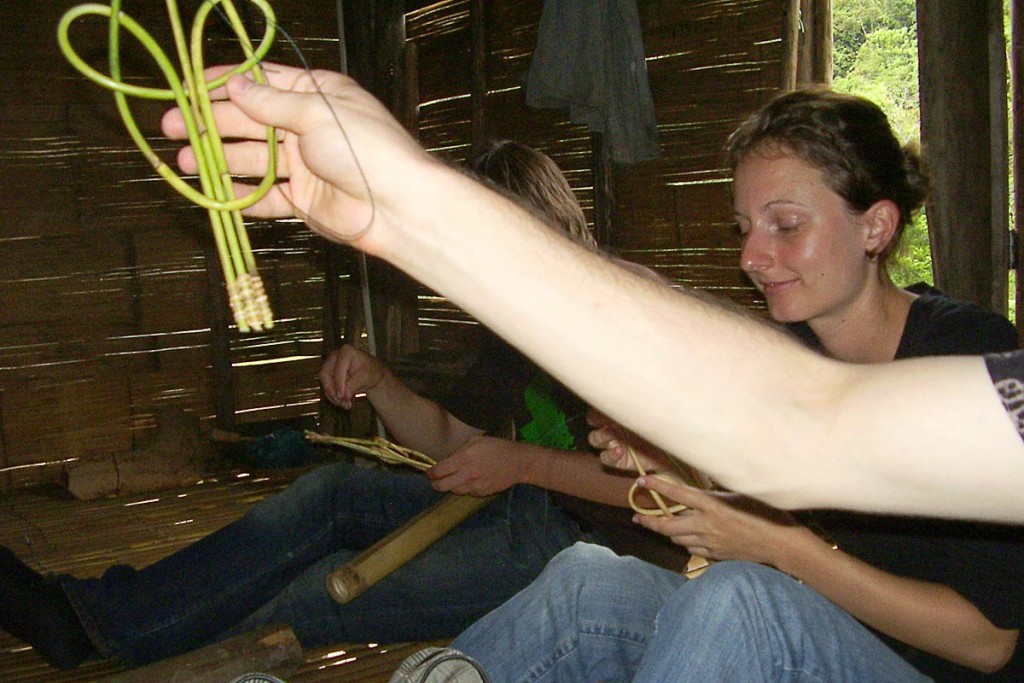
Orang Asli stick and thread game.
It was clear that Kumar was knowledgable about the area, and took great delight in it.
Continuing on, we eventually pulled over and parked, walking down a narrow dirt path across a stream and to some wooden huts on stilts.
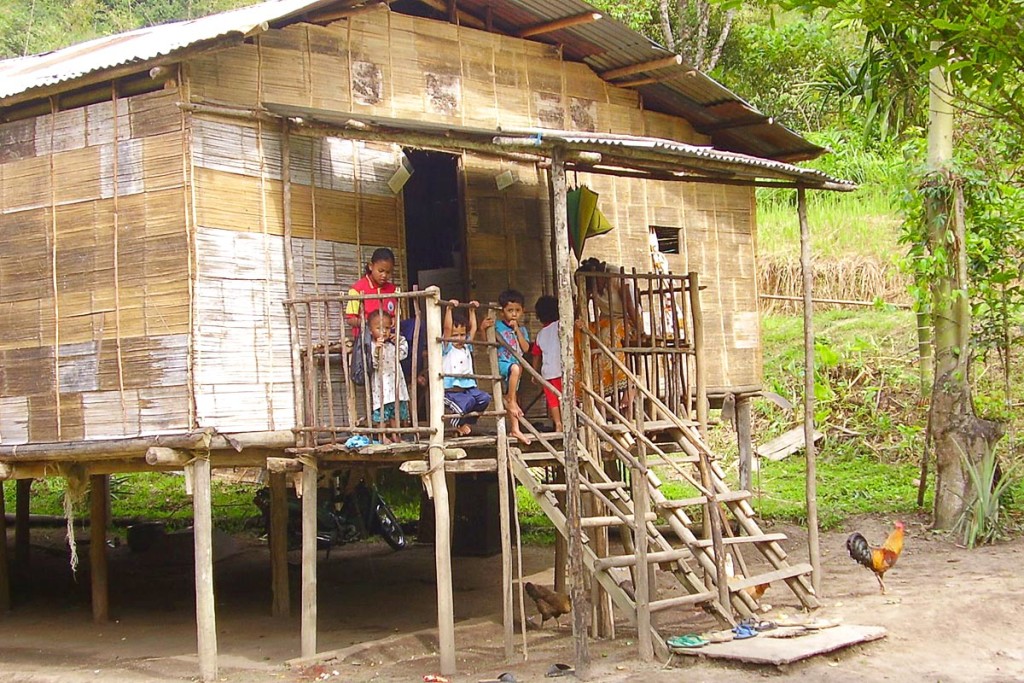
This was the Orang Asli village. It looked just like a scene from an anthropology documentary. Kids ran around wearing t-shirts and shorts (or nothing), chickens strutted and clucked amiably, while adults sat inside the huts with no electricity. There was a vibrant, natural energy to the place.
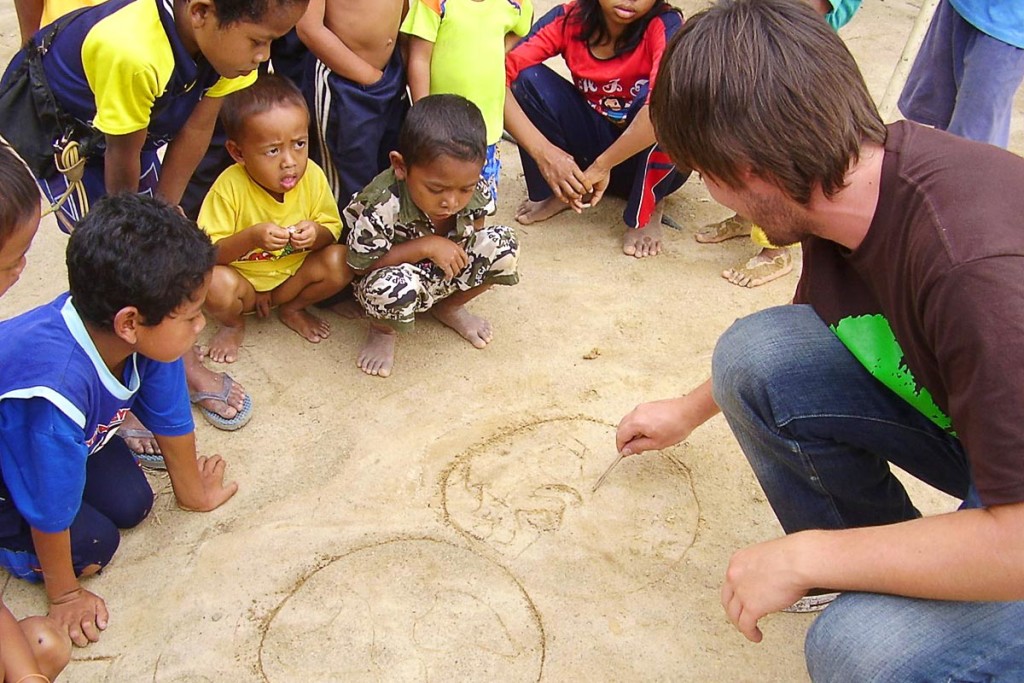
Drawing the Earth to show where we are from. The kid in yellow seems unconvinced by Nicholas’ drawing skills.
First we practiced blowing darts through a long thin pole onto the sole of a flip-flop nailed to the side of one of the huts. Not to brag, but I was the only one who scored a direct hit. “That’s how to do it,” said Kumar approvingly.
Then we climbed up the steps of one of the huts to meet the village elder. Inside, we drank tea, tried their tapioca rice, and played with devices made of sticks and thread, a puzzle you have to disentangle. We couldn’t get it until Kumar showed us how, and even then it was hard.
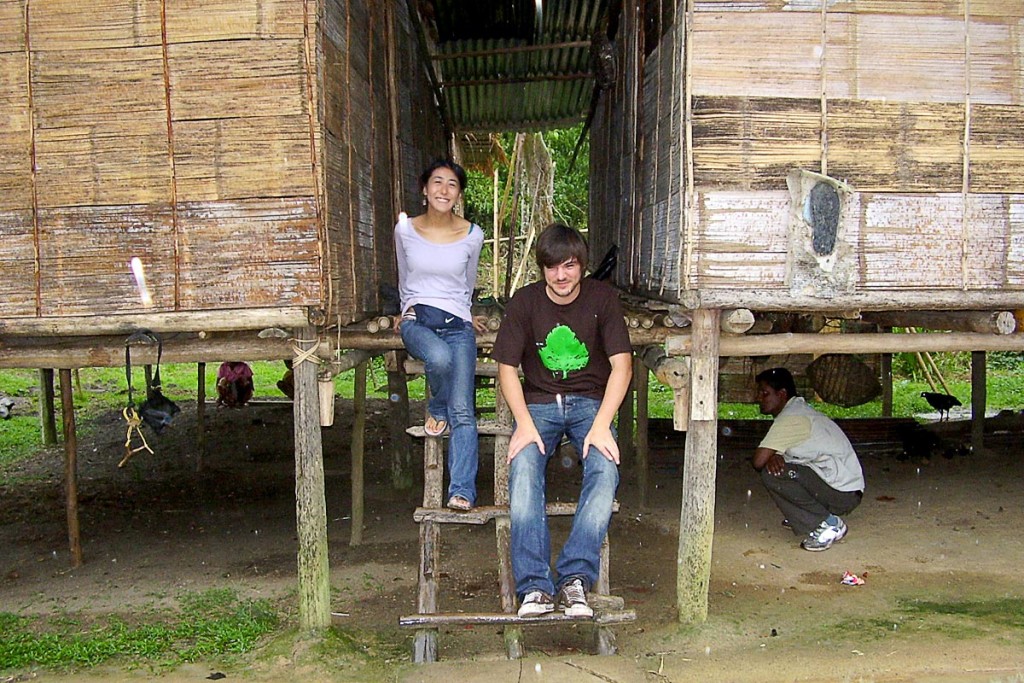
Masayo and Ashton Kutcher. I mean, Nicholas. Kumar lurks thoughtfully under the hut.
Then we wandered the village, communicating and playing with the kids. They were excited to see us, and we tried to explain by drawing in the dirt where we were from. They were used to visitors, and enjoyed having their pictures taken. They even spoke some English, saying, “Where you from?” and having comprehensible conversations with us.
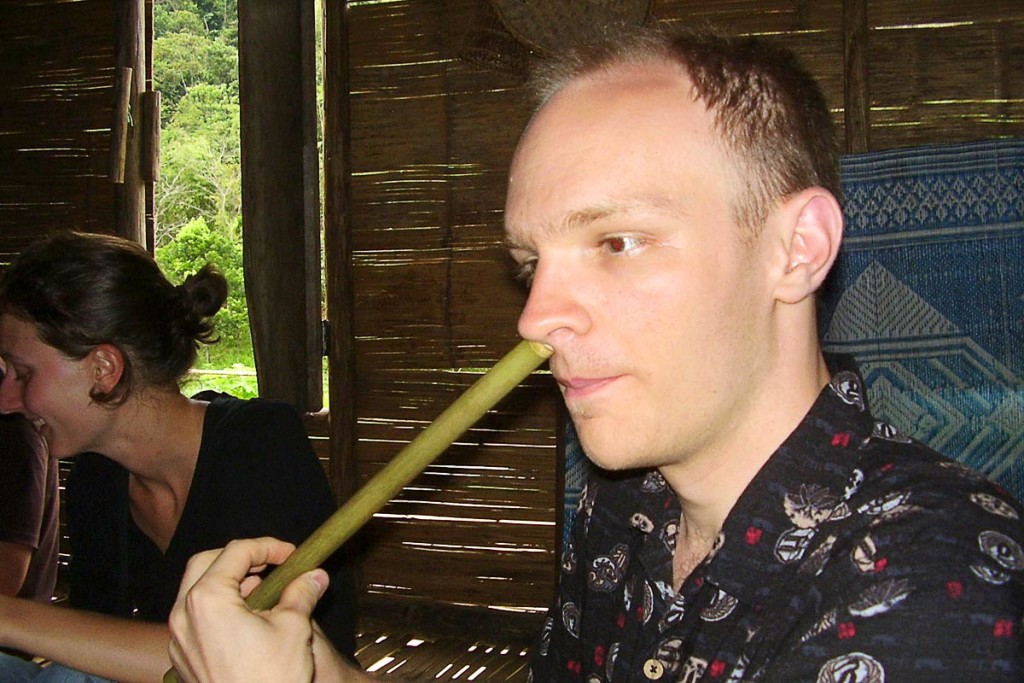
Nose flute.
Throughout the visit, Kumar stressed that this way of life needed to be respected and maintained. I think he likes giving these tours because it allows him to make sure the impact on the locals is as minimal for them and enlightening for visitors as possible.
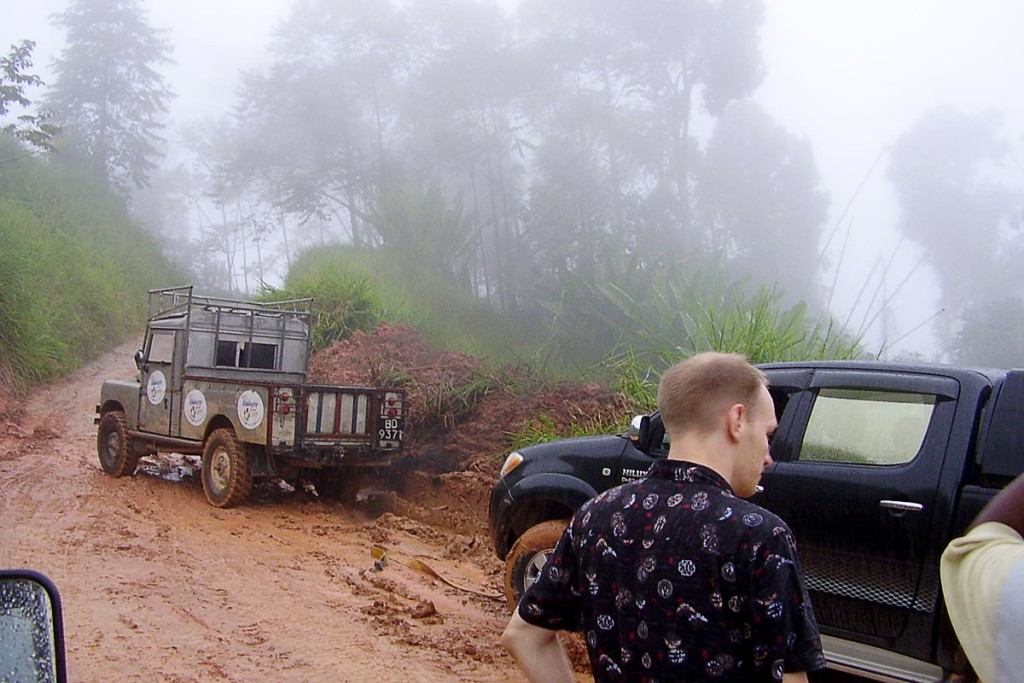
Me pretending to be helpful to the stranded motorist.
Eventually it was time to go. We all smiled and waved and said thank you as best we could, and climbed back in Kumar’s 4×4 as it started to rain, a moist, soothing hot jungle shower pattering through the trees.
On the way back the roads got worse and worse. Even with our 4×4 I could imagine us getting stuck, perhaps overnight. We were really far from any modern roads or other civilization. Probably no phone signal either.
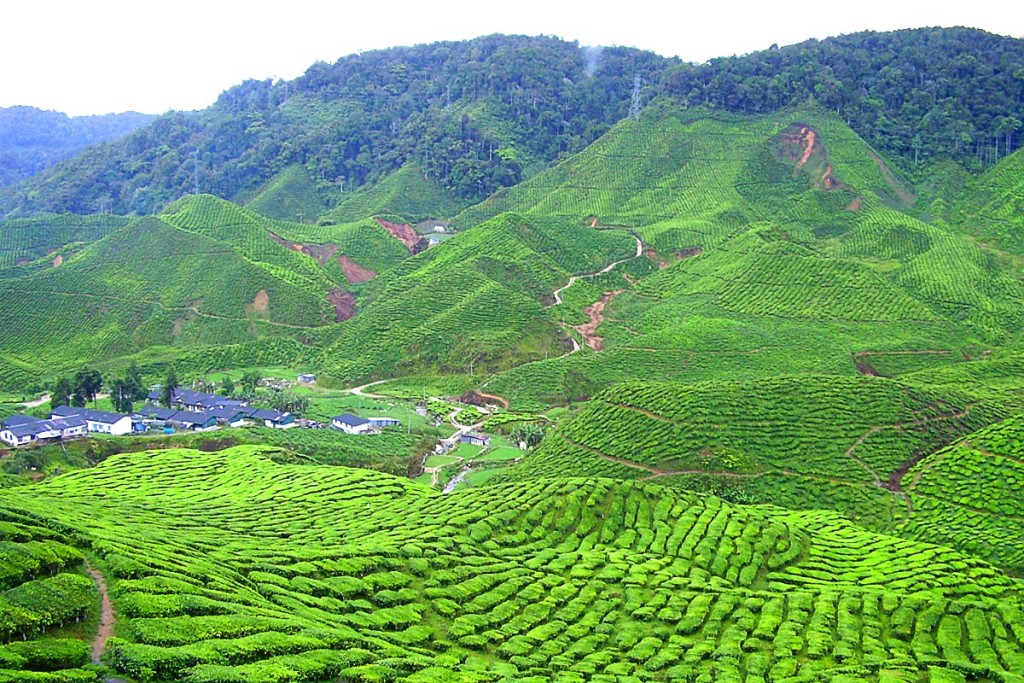
Malaysian tea plantation. Eat your heart out, Ireland.
We did at one point pass a vehicle that had slid off the road and was indeed stuck. We stopped to help but there wasn’t much we could do. Nicholas and I even got out in the rain to help as much as we could. Eventually another car came and we left them to it: we had to save ourselves while we still could.
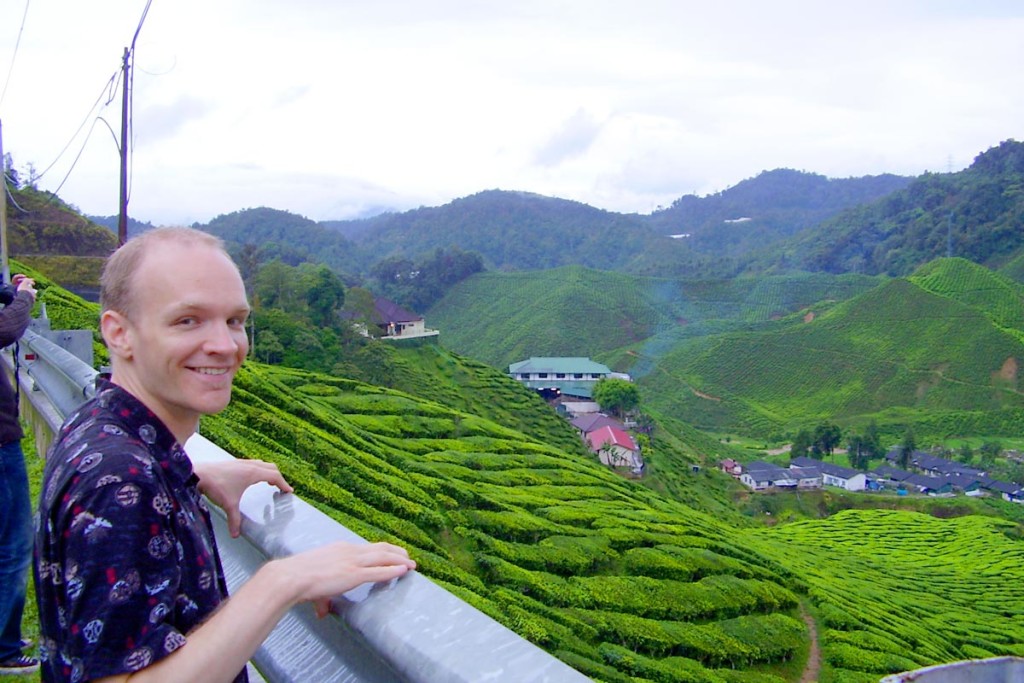
We fortunately had no issues with the rest of our own drive through the jungle; Kumar and his truck proved equal to the challenge presented by the thick highlands storm.
Back on paved roads, we stopped briefly at a tea plantation, several of which dot the Cameron Highlands area. But it was getting dark and Kumar finally drove us back to Father’s Guest House.
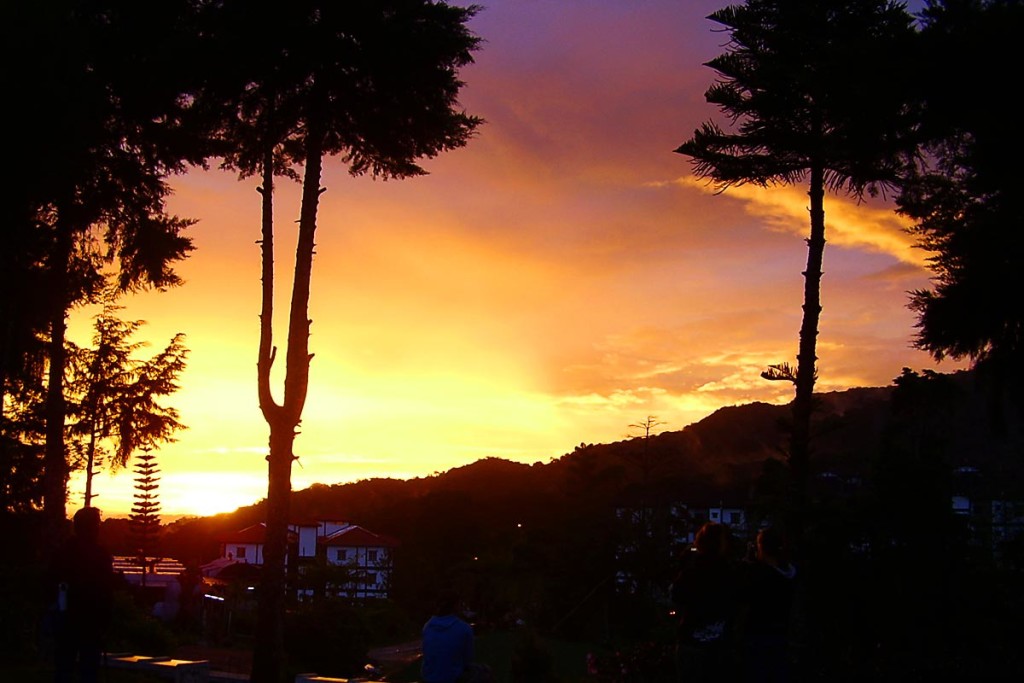
The sunset that awaited us at Father’s Guest House after the Orang Asli tour.
It was a really fascinating day, and a cheap and easy way to get a real peek into traditional life deep in the Malaysian jungle. I’m glad we signed up for the Orang Asli tour; we were even thinking of trying another of the guesthouse’s tours.
Have you visited a small traditional community that still retains its old way of life? Where was it?
Thanks for reading. Suggested:
- Share:
- Read: Day 77: A dizzying day of merging cultures in Cameron Highlands
- Join: Free email newsletter (info and early video access)
- Support: Patreon (much earlier video access and other perks)

Support independent travel content
You can support my work via Patreon. Get early links to new videos, shout-outs in my videos, and other perks for as little as $1/month.
Your support helps me make more videos and bring you travels from interesting and lesser-known places. Join us! See details, perks, and support tiers at patreon.com/t1dwanderer. Thanks!
Want more? Get the free newsletter
Join us! Sign up to my email newsletter to receive updates, behind-the-scenes info,
and early links to my new YouTube videos before everyone else

Thanks for the brilliant sharing! It was so much fun reading it! May I know which agency did you went for the orang asli tour?
Hi Julinda,
It was just a tour run by the place I was staying, Father’s Guesthouse. They had several different tours there.
Thank you Jeremy! I’ll give the guesthouse a phone call! Be blessed richly!
Thanks – good luck! Let me know how it goes.